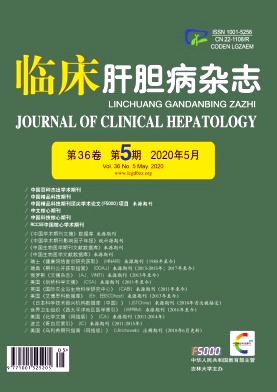Objective To investigate value of combined measurement of serum hepatitis B virus(HBV) covalently closed circular DNA(cccDNA), HBsAg, and HBV pregenomic RNA(pgRNA) in predicting the treatment outcome of HBeAg-positive chronic hepatitis B(CHB) patients treated with entecavir(ETV).Methods A total of 87 HBeAg-positive CHB patients who were diagnosed and treated inThe Second Affiliated Hospital of Suzhou University from May 2015 to May 2017 were enrolled. All patients were treated with ETV for 48 weeks, and the serum levels of HBV cccDNA, HBsAg, and HBV pgRNA were measured at baseline and at weeks 12, 24, and 48 of treat-ment. Thet-test was used for comparison of normally distributed continuous data between groups, and the Mann-WhitneyUtest was usedfor comparison of non-normally distributed continuous data between groups. The chi-square test was used for comparison of categorical da-ta between groups, and the Mann-WhitneyUtest was used for comparison of ranked data between groups. A Pearson correlation analysiswas performed to determine the correlation of liver HBV cccDNA with serum HBsAg and HBV pgRNA. A multivariate logistic regression analysis was used to investigate the predictive factors for complete response, and the receiver operating characteristic(ROC) curve was usedto evaluate the value of serum HBV cccDNA, HBsAg, and HBV pgRNA measured alone or in combination in predicting complete response.Results Of all 87 HBeAg-positive CHB patients after 48 weeks of ETV treatment, 38 achieved complete response and 49 did not achievecomplete response. Compared with the non-complete response group, the complete response group had significant reductions in the levels ofHBV cccDNA at baseline and at weeks 24 and 48 of treatment(Z =-2. 452,-2. 518, and-2. 266, allP< 0. 001), HBsAg at baselineand at weeks 12, 24, and 48 of treatment(Z=-2. 431,-2. 750,-2. 386, and-2. 536, allP< 0. 001), and HBV pgRNA at weeks12, 24, and 48 of treatment(Z=-2. 674,-2. 503, and-2. 528, allP< 0. 001). Compared with the non-complete response group,the complete response group had significantly greater reductions in HBV cccDNA at week 24 of treatment, HBsAg at week 12 of treatment,and HBV pgRNA at week 12 of treatment(Z=-2. 352,-2. 566, and-2. 389,P= 0. 006, 0. 001, and 0. 004). Serum HBsAg andHBV pgRNA were positively correlated with HBV cccDNA in liver tissue(r= 0. 553 and 0. 757, bothP< 0. 001). The levels of HBVcccDNA at week 24 of treatment(odds ratio [OR] = 6. 248, 95% confidence interval [CI]: 1. 574-14. 262,P< 0. 05), HBsAg at week12 of treatment(OR = 5. 452, 95% CI: 2. 048-16. 888,P< 0. 05), and HBV pgRNA at week 12 of treatment(OR = 5. 670, 95% CI:1. 201-16. 183,P< 0. 05) were predictive factors for complete response. As for the area under the ROC curve(AUC), HBV cccDNA,HBsAg, or HBV pgRNA measured alone had a significantly lower AUC than the combined measurement of the three indices(0. 845/0. 741/0. 773 vs 0. 913, allP< 0. 001), and the patients with a value of < 9. 7 could achieve complete response at week 48 of treatment.Conclusion Combined measurement of serum HBV cccDNA, HBsAg, and HBV pgRNA has a good value in predicting the treatment outcome ofHBeAg-positive CHB patients treated with ETV.







 DownLoad:
DownLoad: